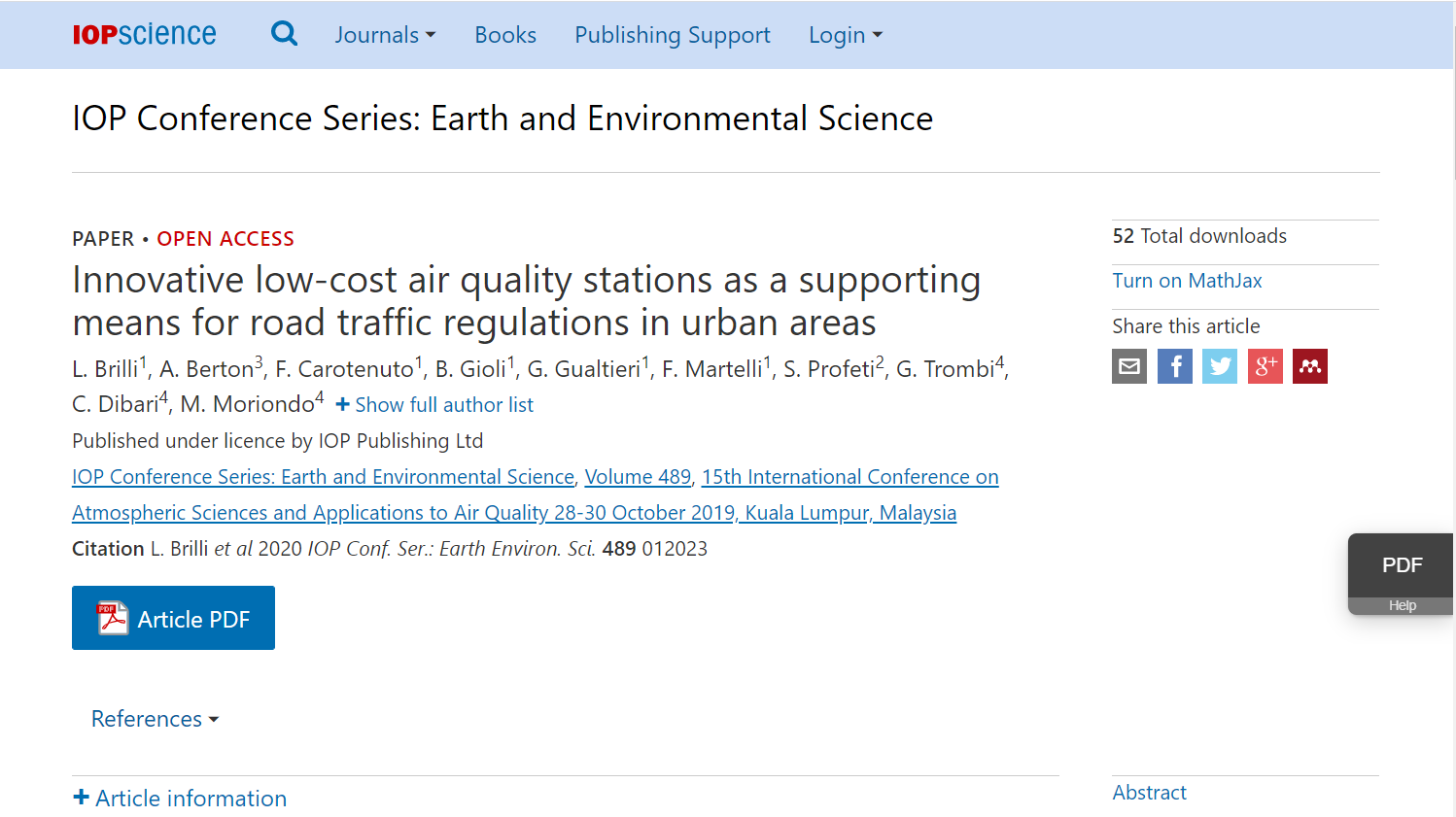Air pollution is currently one of main issues affecting urbanized areas worldwide. Industrial activities, road traffic and heating systems are main emission sources significantly increasing the levels of atmospheric pollutants as particulate matter, ozone, and nitrogen oxides. Local administrations monitor these harmful gases by means of reference monitoring stations provided by regional/national environmental protection agencies. These stations, however, have limitations due to the little presence over the whole municipality, low time-frequency, and high costs.
In this framework, CNR-IBE, University of Florence – Department of Agriculture, food, environment, and forestry (DAGRI), Tuscany Region Environmental Protection Agency (ARPAT) and epidemiologists of the Pisa University agreed an initiative to create an environmental “living lab” aimed at assessing the impacts due to anthropogenic activities on air quality and thus on population exposure. Two study areas located in the Tuscany region (Italy) were chosen: the rural town of Capannori, and the city of Florence. The town of Capannori was selected since it lies within a critical area both affected by a variety of emission sources and winter weather conditions unfavourable to pollutant dispersion. The city of Florence was chosen for assessing air quality in urban areas following a possible traffic reduction due to creation of new urban tramway lines.
The air quality analysis was carried out by means of a monitoring network comprising innovative low-cost stations (named AIRQino). PM concentrations were mainly considered for providing indicative air quality measurements. The preliminary results indicated that:
- low-cost stations, after calibration and validation against more than one-year observations from a reference air quality station, confirmed their reliability in measuring air quality data;
- AIRQino data can supplement air quality information from reference stations and may be used to help traffic regulation actions at urban scale.
